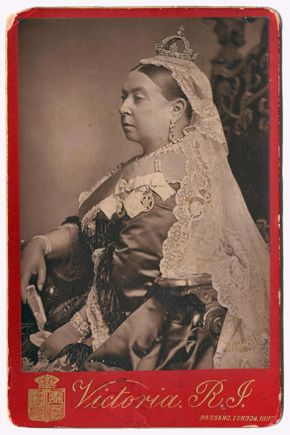A New Type of Royal Portrait: Queen Victoria & Photography October 3, 2018

Queen Victoria was the first British monarch to be photographed.
Alexander Bassano, Queen Victoria, 1887, carbon print, National Portrait Gallery, London.
Tudors to Windsors: British Royal Portraits from Holbein to Warhol captures the changing face of the monarchy. The exhibition not only showcases the many characters who, for better or worse, ruled Britain since the late 1400s, it also illustrates how they were memorialized in art. One monarch, especially, set a new precedent for how royals were depicted: Queen Victoria (1819–1901).
One of Great Britain’s longest-reigning rulers (second only to Queen Elizabeth II), Victoria was only 18 years old when she ascended the throne in 1837. Major developments in science, technology, and philosophy occurred during her reign—including the invention of photography. Victoria and her husband, Prince Albert of Saxe-Coburg and Gotha, embraced the medium.
Photographic images of royals were widely reproduced, transforming the public perception of the royal family: a standard that continues to the present-day royals.
Hit “play” below to hear David Bomford, the Audrey Jones Beck Curator of European Art and chair of conservation, discuss Queen Victoria and her innovative use of photography.
See more in “Tudors to Windsors: British Royal Portraits from Holbein to Warhol,” on view through January 27, 2019.





